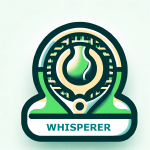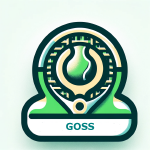Managing Match Pressures: Why Teen Tennis Players Struggle and How to Help Them
Back in 2004, Carolyn Anderson was fresh out of university as a psychologist when she competed in taekwondo at the Athens Olympics. She admits now that she was totally unprepared for the intensity of it all. Fast forward twenty years, and she returned to the Olympics, this time as the Australian team psychologist.
Since that time, sports psychology has evolved dramatically.
“At that time, the advice was, ‘You should feel confident, calm, and relaxed,’” Anderson recalls. “But I didn’t feel any of those things. I wasn’t aware of impostor syndrome back then. I’d find myself walking through the Olympic Village thinking, ‘What am I even doing here?’” She believed she had to push those feelings aside. Now, she teaches athletes to make space for them.
“These feelings aren’t bad,” she explains. “We’re human, and they’re going to happen. What’s important is how we deal with them. It’s not about replacing negative thoughts with positive ones. That’s not how it works. It’s more about how we respond to those thoughts.”
Anderson often talks to athletes about the fight-or-flight response. “It’s a reaction that shows up in life-or-death situations, but it also happens at the Olympics. No one’s in danger, but the brain doesn’t know that—it sees it as an emotional threat, not a physical one.”
She adds that it’s pretty common for athletes to feel so anxious before competition that they’re almost sick to their stomachs. “But once you understand what’s going on in your body, you can see it’s actually helping you. It boosts your energy, sharpens your focus, and turns off non-essential systems like digestion.”
“When you start to view these physical reactions as something that’s making you faster, stronger and more efficient, it can be a game-changer.”
Strategies for Teen Tennis Players Inspired by Anderson’s Insights:
1. Embrace the Nerves:
Key Idea: Instead of trying to get rid of prematch anxiety, recognize it as a natural part of competition.
Nerves are a sign that you’re ready. Use practice matches to recreate that pressure, and practice rituals, mindfulness and deep breathing to handle your jitters.
2. Understand Fight-or-Flight:
Key Idea: The body’s fight-or-flight response is preparing itself for competition, it is not something to be feared.
When you notice your heart pounding or your muscles tensing, you should realize it’s your body gearing up for peak performance. Practice 4-7-8 breathing and visualization to change your mindset when under pressure.
3. Respond to Thoughts, Don’t Replace Them:
Key Idea: It’s okay to have negative thoughts. The goal is to manage them, not block them out.
During practice, acknowledge doubts like “I’m playing badly” and try to respond with “find a way” to adjust your performance with the parts of your game that are working for you on the day.
4. Build a PreMatch Routine:
Key Idea: Create a consistent routine that includes visualization to mentally prepare for tough matches.
Visualize yourself handling different scenarios on court, while also using warm-up exercises to ease yourself into the right headspace before competition.
5. Reframe Physical Reactions:
Key Idea: Understand that sensations like a racing heart or sweaty palms are signs you’re ready to perform, not signs of weakness!
Try to simulate match-day conditions in training, and recognize that your feelings can be viewed as helpful rather than stressful.
6. Combine Mental and Physical Training:
Key Idea: Mental calmness is important, but so is physical readiness, especially through agility and balance.
Perform drills like side shuffles and moving drills to help you keep your feet moving. Consistent footwork training can make sure you remain balanced even in high-pressure moments.
7. Build Mental Resilience by Facing Pressure:
Key Idea: The more players get used to handling pressure in practice, the better they’ll deal with it in real matches.
Practice challenging situations (e.g., tie breaker points, half-court quadrants) to simulate the stress you’ll face during actual competition.
These strategies address both the mental and physical challenges of competitive tennis, helping you become more resilient and adaptable under match pressure.
Precursor article: Handling Stress on the Court: Why Teenage Tennis Players Struggle and How to Help




